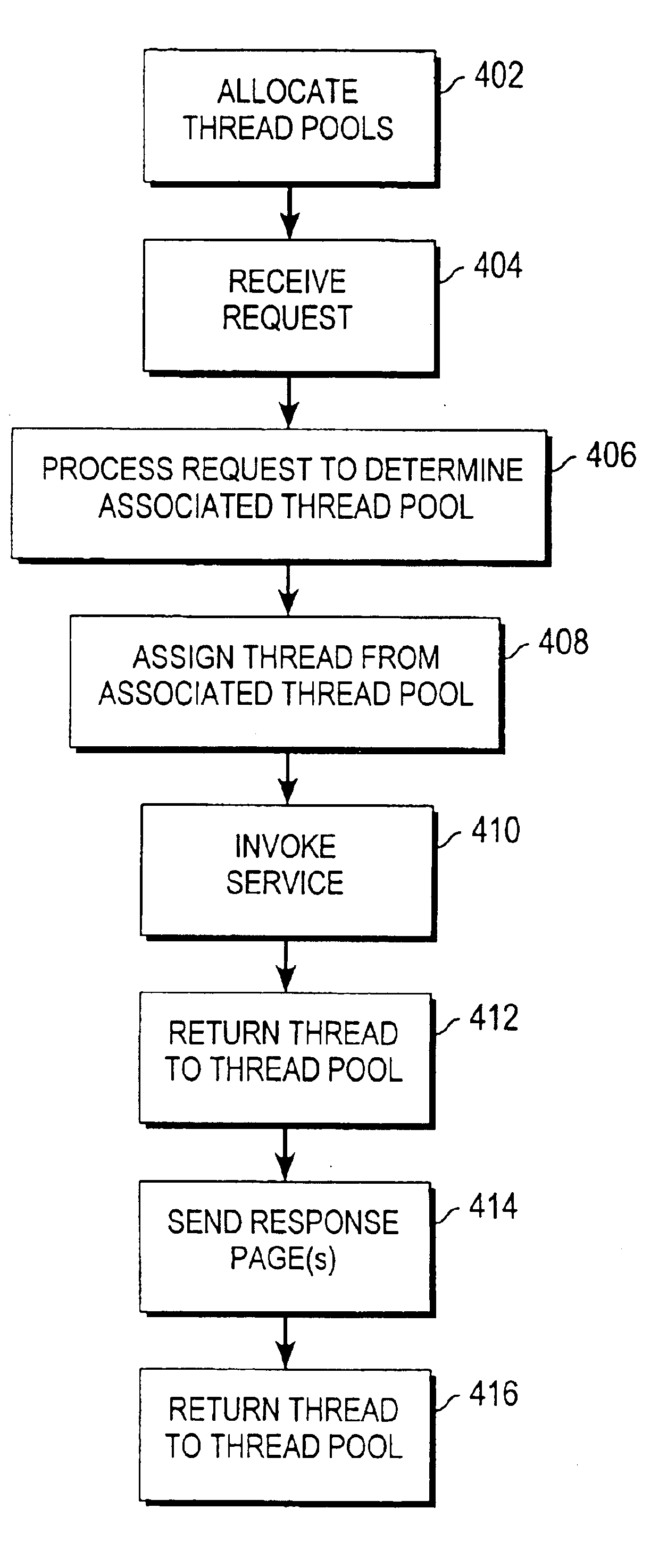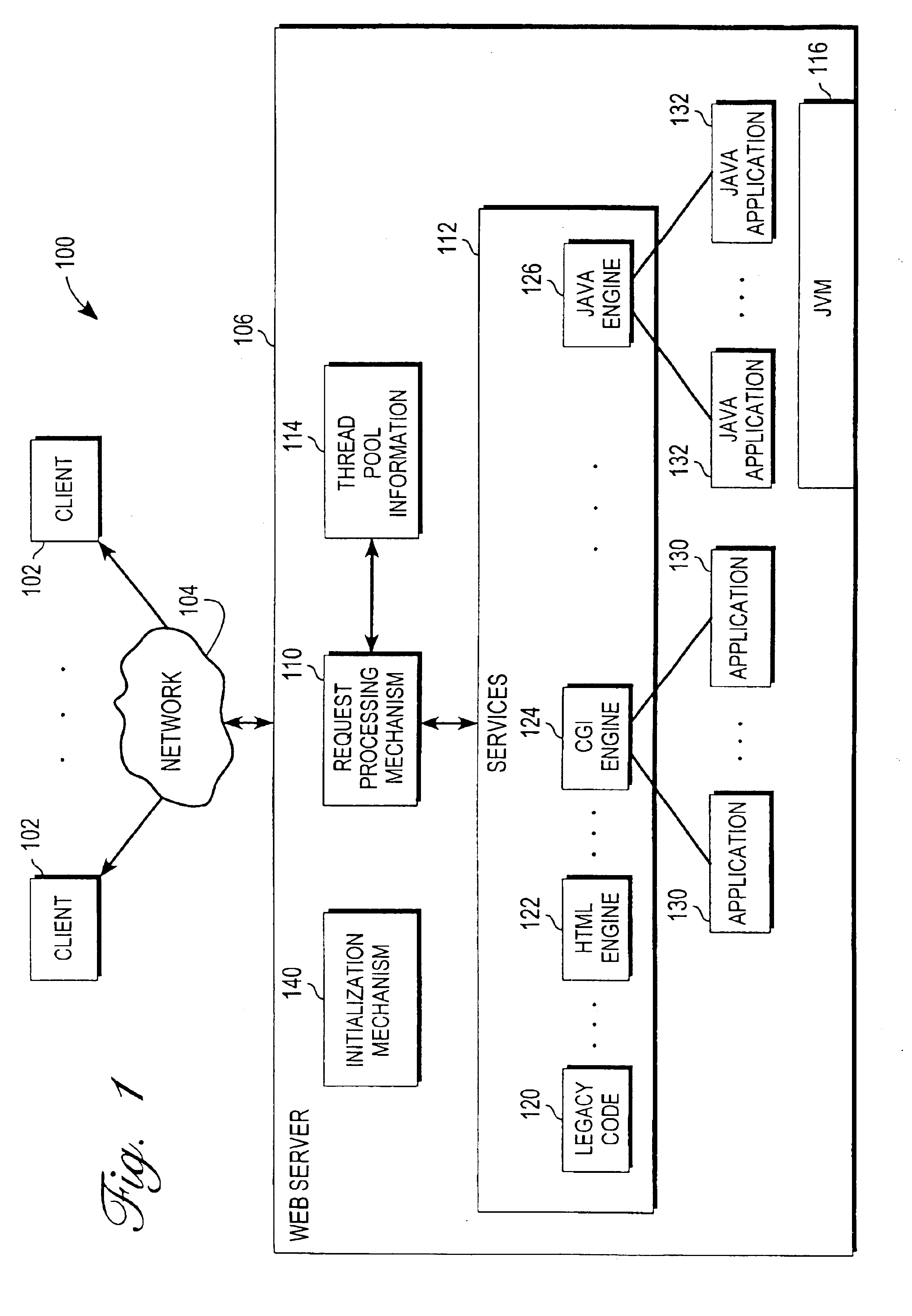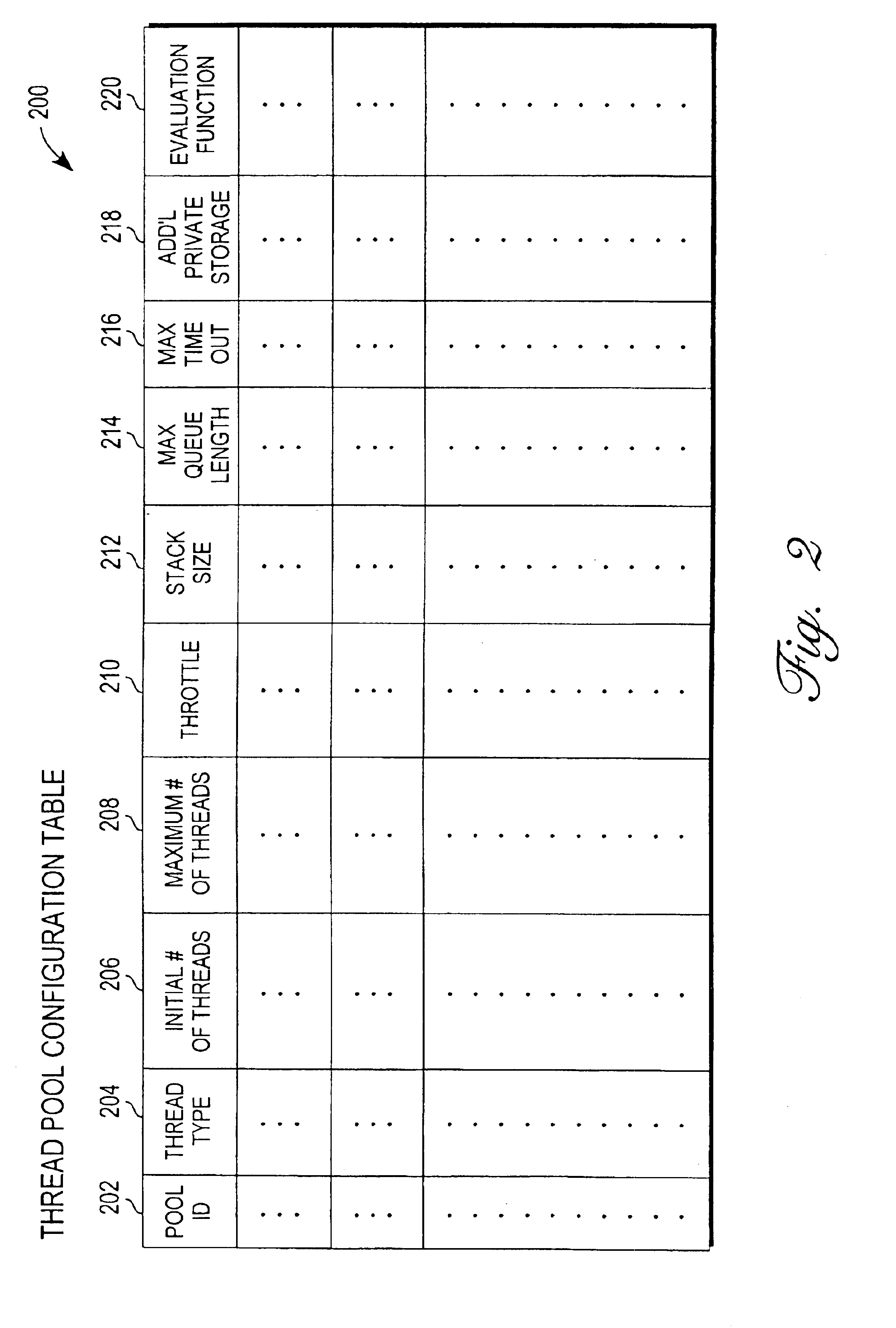Mechanism for evaluating requests prior to disposition in a multi-threaded environment
a multi-threaded environment and request technology, applied in the field of computer systems, can solve the problems of memory waste, limit the number of lightweight services, and conflicting requirements of these service types, and achieve the effect of optimizing the service of requests, optimizing system performance, and convenient invocation
- Summary
- Abstract
- Description
- Claims
- Application Information
AI Technical Summary
Benefits of technology
Problems solved by technology
Method used
Image
Examples
Embodiment Construction
)
[0018]With reference to FIG. 1, there is shown a functional block diagram of a system 100 in which one embodiment of the present invention may be implemented, the system comprising a plurality of clients 102, a network 104, and a web server 106. For the sake of illustration, the invention will be described with reference to a web server 106, but it should be noted that the invention is not so limited. Rather, the invention may be implemented in any type of server or computer system in which it is desirable to implement multi-threading.
[0019]For purposes of the present invention, the client 102 may be any mechanism capable of communicating with the server 106, including but not limited to a computer running a browser program. The client 102 may communicate with the server 106 using any known protocol, including but not limited to HTTP and FTP, and the client 102 communicates with the server 106 via the network 104. The network 104 may be any type of network, including but not limite...
PUM
 Login to View More
Login to View More Abstract
Description
Claims
Application Information
 Login to View More
Login to View More - R&D
- Intellectual Property
- Life Sciences
- Materials
- Tech Scout
- Unparalleled Data Quality
- Higher Quality Content
- 60% Fewer Hallucinations
Browse by: Latest US Patents, China's latest patents, Technical Efficacy Thesaurus, Application Domain, Technology Topic, Popular Technical Reports.
© 2025 PatSnap. All rights reserved.Legal|Privacy policy|Modern Slavery Act Transparency Statement|Sitemap|About US| Contact US: help@patsnap.com



